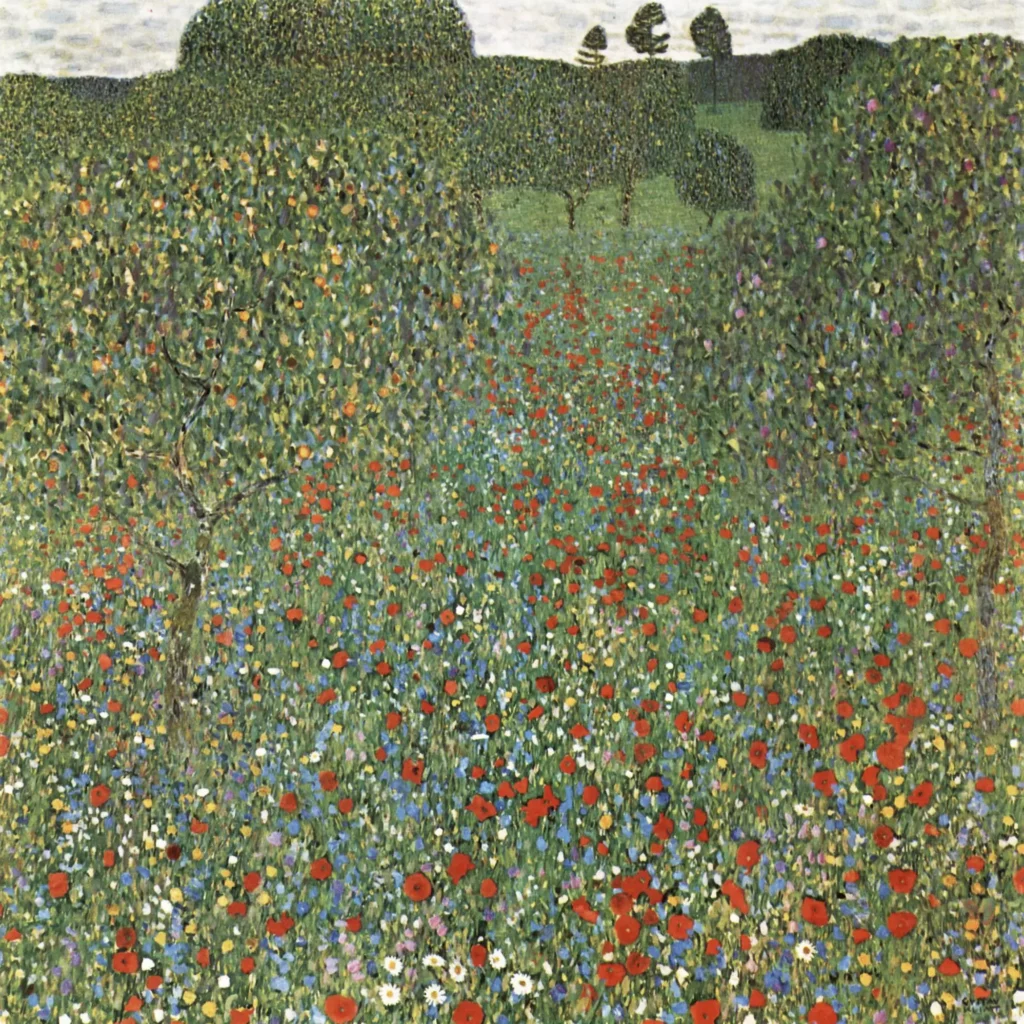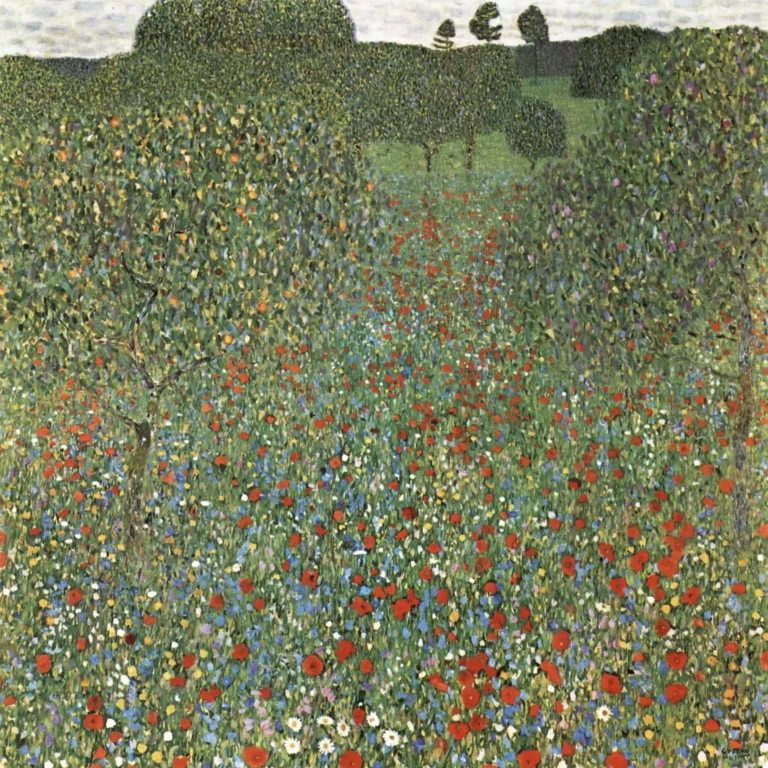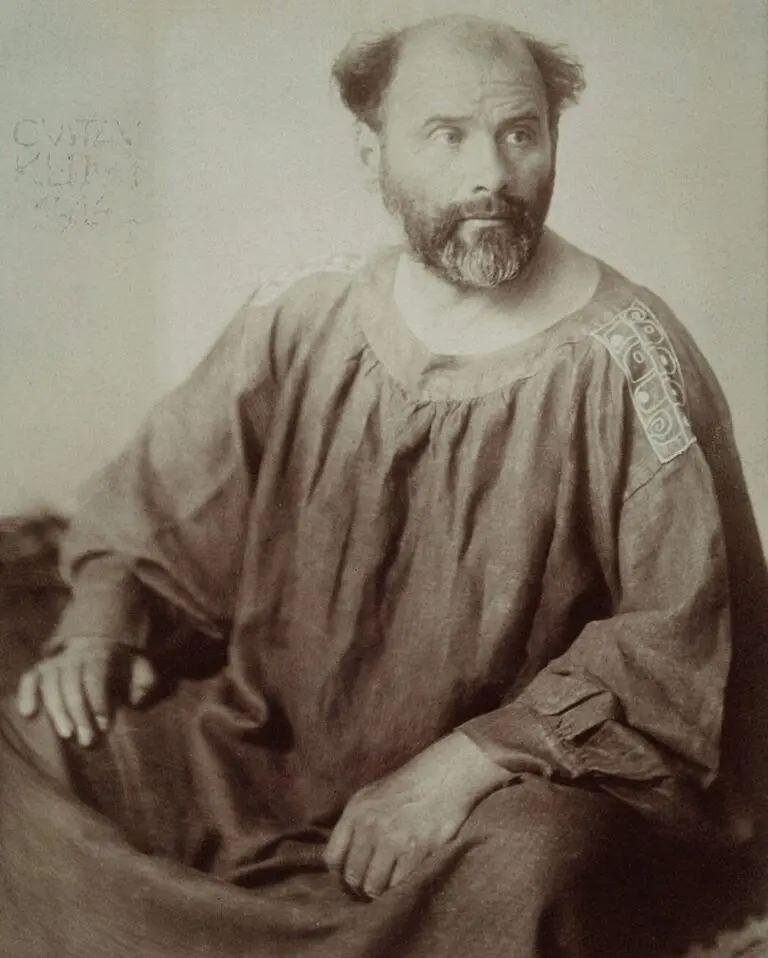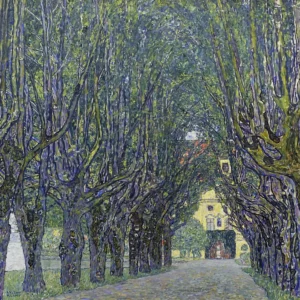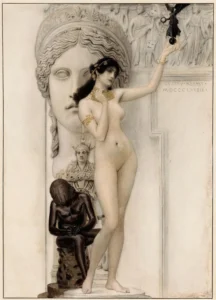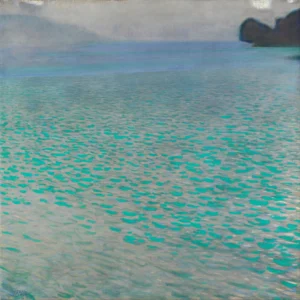Mohnfeld (1907)
Created in 1907, Gustav Klimt's artwork Mohnfeld captures a lush landscape infused with the vibrant charm of poppies. Characterized by the artist's signature gold leaf, ornate detailing, and symbolic elements, this painting represents Klimt's illustrious Golden Phase. The work measures 110 x 110 cm and is celebrated for its rich decorative qualities that transport viewers to a dreamy natural realm.
Year 1907
About the Artwork
Mohnfeld, painted in 1907, represents an enchanting blend of nature and Klimt's distinctive aesthetic. As part of his Golden Phase, Klimt employed elaborate patterns and gold leaf to elevate the emotional resonance and visual allure of his paintings. The piece captures the beauty of a poppy field, evoking a sense of tranquility and wonder. At the time, Klimt was gaining recognition for his unique style, and Mohnfeld exemplifies how he brought traditional landscape themes into the modern decorative arts realm. The use of flowers was symbolic of nature's transient beauty while reflecting Klimt's fascination with patterns found in the natural world.
Did You Know
The painting Mohnfeld was created during Gustav Klimt’s famous Golden Phase, a period from 1899 to 1910 characterized by the use of gold leaf and intricate ornamentation in his artworks.
Mohnfeld reflects Klimt’s fascination with natural motifs, as flowers and poppies often symbolize beauty, transience, and seduction in art, embodying both life and death.
Mohnfeld is housed at the Österreichische Galerie Belvedere in Vienna, a museum renowned for its extensive collection of Austrian art, ensuring the preservation and celebration of Klimt’s legacy.




